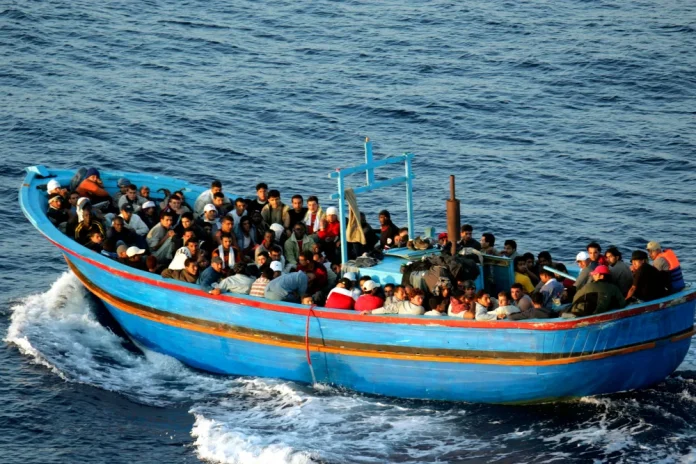The term “pull factor” is used in many heated debates about migration several times a day – EUobserver.
The “push-pull” model dates back to the 19th century and the work of Ernest George Ravenstein, who worked on Laws of Migration that would help to predict human migrations. Since then, scientists have been trying to identify factors and their relevance in explaining human movements.
Migration researchers Hein de Haas, Stephen Castles and Mark Miller note the following in their book The Age of Migration:
“Push-pull models are inadequate to explain migration, since they are purely descriptive models enumerating factors which are assumed to play “some” role in migration in a relatively arbitrary manner, without specifying their role and interactions.”
Although the model does not capture the complexity of migration projects and dynamics, the “pull factor” theory is widely used in a simplified form in public debates on migration.
UK Prime Minister Rishi Sunak recently suggested that children arriving by boat should not be released from detention:
We don’t want to create a pull factor to make it more likely that children are making this very perilous journey in conditions that are appalling.
In France, a local municipality tried to prevent a charity organisation from installing outdoor showers, fearing they could become a pull factor for migrants.
In Germany, too, there is a heated debate about the pull factor. Friedrich Merz, head of the Christian Democratic Union, complained rejected asylum seekers received social benefits and dental treatment in Germany, while German citizens could not even get dental appointments.
In the Mediterranean countries, the pull factor has also been the subject of loud debate. Even before the maritime rescue operations, aid was stopped by the state leadership after being accused of increasing the number of migrants crossing the border from North Africa. In 2014, the Italian operation Mare Nostrum fell victim to similar talk of the pull factor.
As a result, the number of rescue operations at sea is declining, forms of refusal of assistance have become systematic, and the number of fatalities has been steadily increasing.
Despite numerous attempts to debunk the myth of the pull factor, the theory is still working. However, instead of conducting further research to disprove the theory, people need to stop talking about it. Accepting the terms of the debate risks that the premises of this “theory” will one day become the basis for legislative initiatives.
Researchers note that without lifeguards at sea, many would not migrate at all. The presence of those who will provide assistance significantly affects the decision of migrants whether to move on or not.
Glenda Garelli and Martina Tazzioli consider pull factor talks to be a trap that leads to a dead end. Devoid of any sense, they have become fashionable today because they fulfill a specific political task.
Given the dominant anti-migration stance in Europe, such discussions allow us to justify “hostile environment policies”, attacks on humanitarian aid and on migrant solidarity. As a result, it all comes down to the pull factor.
This week marks the 10th anniversary of a shipwreck that claimed hundreds of lives. Over the past decade, tens of thousands of people have lost their lives in the Mediterranean. Despite this, people continue to risk their lives in search of better living conditions.
Migration will continue, but theories such as the pull factor, which are detrimental to the perception of the migration process, must be reconsidered and discarded.
